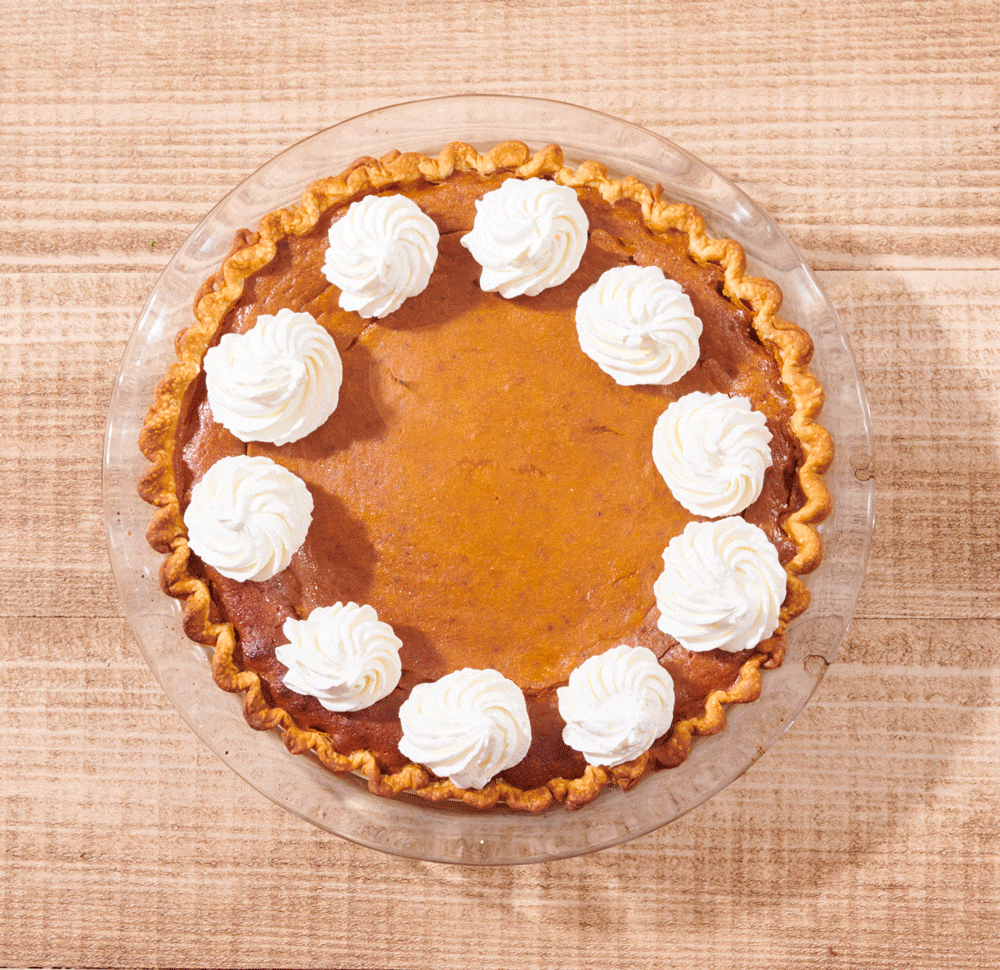Best Light Pumpkin Pie

Best Light Pumpkin Pie
Ingredients
- 15 ounces pumpkin canned, 1 can
- 2 each egg whites
- 1 each egg
- .3 cups sugar
- 1 cup skim evaporated milk, canned
- 2 tsp pumpkin pie spice
- 8 ounce pie crust make your own or buy one or see our recipe for olive oil pie dough on this website link at bottom
- 10 tablespoons whipped cream whipped soft for garnish
- 10 each cranberries for garnish (use leftover cranberry sauce or steam for a few minutes in juice to sweeten and soften)
Instructions
- Roll the pie crust out very thin. Place in a 9 inch pie pan. Flute the edges of the crust.
- Mix the pumpkin with the eggs with a whisk until smooth. Add the sugar and spice. Mix smooth.
- Stir in the skim evaporated milk.
- Pour the mixture into the pie pan. Bake until firm in the center at 325 or 350, for about 50-55 minutes.
- Allow the pie to cool.
- Top each slice of pie with a small rosette of whipped cream and a cranberry garnish.
Nutrition Facts
Calories
183.77Fat
7.57 gSat. Fat
2.72 gCarbs
24.36 gFiber
1.89 gNet carbs
22.47 gSugar
10.8 gProtein
5.17 gSodium
141.16 mgCholesterol
20.81 mgFun facts:
The history of pumpkin pie can be traced back to early Native American and European culinary traditions. Here's a brief overview of how pumpkin pie has evolved over time:
Native American Roots: Pumpkins and other squashes are native to the Americas, and they were cultivated by Native American tribes for centuries before the arrival of Europeans. Indigenous people cooked pumpkins by roasting or boiling them and used them in a variety of dishes.
European Influence: When European settlers arrived in North America, they encountered pumpkins and squashes, which were unfamiliar to them. The colonists quickly adopted these foods into their diets, often adapting Native American culinary practices. They began using pumpkins in pies and other dishes.
Early Pies: Early versions of pumpkin pies in colonial America were quite different from the pies we know today. They were made by hollowing out the pumpkin, filling it with a mixture of milk, spices, and sweeteners, and then baking the whole thing. The resulting dish was more like a custard baked in a pumpkin shell.
Evolution of Ingredients: Over time, the recipe evolved. The English tradition of making sweet pies using a pastry crust led to the development of the pumpkin pie we are familiar with today. Early recipes used a mixture of pumpkin, spices, and sometimes honey, and they were baked in a pie crust.
Thanksgiving Connection: Pumpkin pie became associated with Thanksgiving in the 19th century. Sarah Josepha Hale, a prominent editor and writer, campaigned for Thanksgiving to become a national holiday, and she included pumpkin pie in her vision of the feast.
Canned Pumpkin: In the late 19th century, canned pumpkin became available, making it easier to make pumpkin pie with consistent results.
Modern Pumpkin Pie: Modern pumpkin pie recipes typically use canned pumpkin puree, which is made from a specific type of pumpkin known as the Dickinson pumpkin. This variety is smoother and has a milder flavor than the pumpkins traditionally used for carving.
Variations: While the traditional pumpkin pie with its blend of spices (cinnamon, nutmeg, cloves) remains popular, there are now many variations, including adding whipped cream, pecans, or even turning it into a cheesecake-like dessert.
Pumpkin pie has become an iconic dish during the fall and Thanksgiving seasons in the United States and Canada. Its history reflects the blending of Native American and European culinary traditions and the evolution of ingredients and cooking methods over the centuries.

